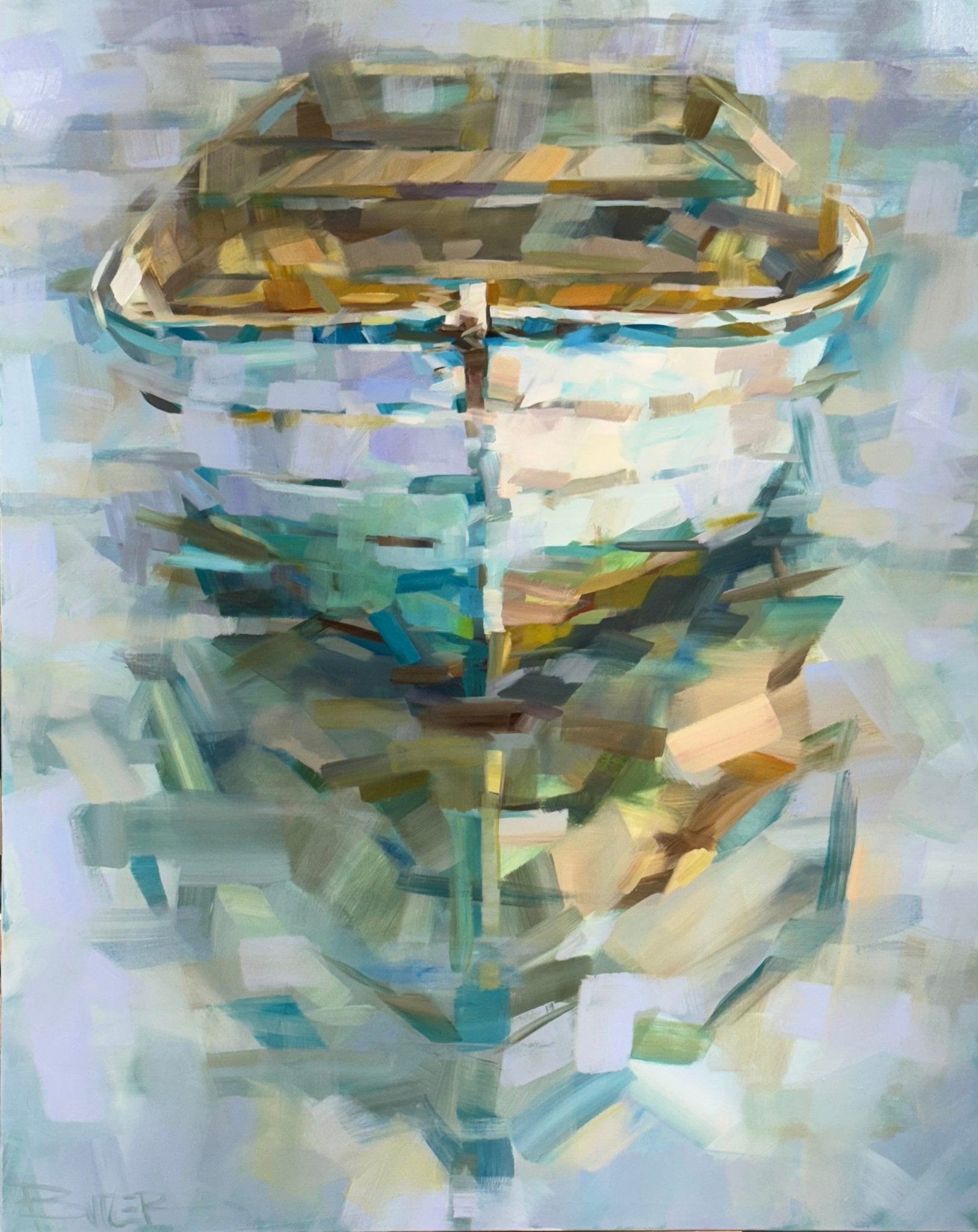Abstract and Contemporary Oil Paintings for Sale
Abstract and Contemporary Oil Paintings for Sale
Blog Article
Discovering Everything About Oil Paints: A Guide to Comprehending Their Beauty and Value
Oil paintings have actually mesmerized target markets for centuries, providing a glance right into the artistic mastery of various ages. Their rich background is linked with innovative methods and profound psychological expression. Recognizing the products and methods behind these artworks can enhance gratitude. In addition, the market for oil paints presents possibilities for collectors and investors alike. As one explores this interesting world, the concern arises: what makes an oil painting genuinely beneficial?
The Background of Oil Painting: A Trip Via Time
Although oil painting has origins that go back to ancient times, it absolutely thrived throughout the Renaissance, when artists found its versatility and rich shade possibility. Early examples can be mapped to the 7th century, with strategies progressing significantly across cultures. The tool came to be prominent in Northern Europe in the 15th century, specifically with the jobs of artists like Jan van Eyck, who originated its use for in-depth realistic look and lively shades. This duration noted a departure from tempera paints, enabling greater depth and appearance. As oil painting spread, it influenced countless artists, causing work of arts by renowned figures such as Leonardo da Vinci and Rembrandt. The tool's tradition proceeds, shaping the art globe well into contemporary times.
Understanding Oil Paints: Products and Techniques
As artists check out the globe of oil paints, they come across a diverse range of materials and techniques that define this tool. The primary parts of oil paint consist of pigments, which supply color, and drying oils, such as linseed, that bind the pigments and facilitate application. Different additives can customize the paint's texture and drying out time, improving adaptability. Methods like glazing, where transparent layers are developed, and impasto, which includes applying thick paint, allow for different aesthetic results. Additionally, using brushes, palette blades, and also fingers can produce special appearances and surfaces. Recognizing these products and techniques allows musicians to fully express their creativity and accomplish the preferred influence in their art work.
The Duty of Shade in Oil Paints
Shade plays a crucial duty in oil paints, affecting both aesthetic allure and psychological vibration. Comprehending color concept basics, including the partnerships between hues, can boost an artist's ability to communicate mood and ambience. Additionally, grasping shade blending methods permits greater depth and richness in a painting's palette.

Shade Theory Basics
Comprehending shade concept is essential for musicians functioning with oil paints, as it forms the structure for producing harmonious and aesthetically interesting structures. Color concept includes the research study of exactly how shades connect, the shade wheel, and the relationships between key, additional, and tertiary shades. Musicians use complementary shades to boost contrasts and create prime focus, while analogous colors advertise unity and cohesiveness within an item. In addition, the principles of cool and cozy colors influence the understanding of deepness and area in a paint. Understanding these principles enables musicians to manipulate shade successfully, directing the visitor's eye and connecting their desired message. Proficiency of shade concept ultimately improves an artist's ability to communicate feelings and ideas through their job.
Psychological Impact of Color
The psychological effect of shade in oil paintings plays a critical duty in exactly how audiences regard and attach with art work. Shades evoke particular sensations and moods, influencing the visitor's emotion. Cozy tones like oranges and reds can produce a sense of warmth and energy, while great tones such as blues and greens usually evoke peace or self-questioning. Artists strategically pick color combinations to boost narrative elements, directing the target market's psychological trip. The saturation and contrast of shades additionally magnify these impacts, attracting focus and creating emphasis. Eventually, the interplay of shades in oil paintings not only enhances their aesthetic charm yet also serves as an effective medium for psychological expression, enhancing the customer's experience and interpretation.
Shade Combining Techniques
While several elements of oil painting add to the overall structure, mastering shade mixing strategies is vital for attaining preferred effects and depth. Color blending can be come close to via various techniques, consisting of the additive and subtractive procedures. Additive blending involves combining colors of light, while subtractive blending relies upon pigments, where colors mix to create brand-new tones. Musicians frequently use a limited combination to create harmonious jobs, comprehending the partnerships in between primary, additional, and tertiary shades. Strategies such as glazing and scumbling even more enhance deepness and brightness. By masterfully mixing shades, a musician can evoke emotions, develop prime focus, and attain a sense of realism, ultimately elevating the paint's visual and psychological impact.
Famous Oil Painters and Their Iconic Functions

Famed for their mastery of shade and strategy, oil painters have created several of one of the most renowned artworks in background. Prominent artists like Vincent van Gogh mesmerized target markets with his stirring brushwork in "Starry Evening," while Claude Monet's "Impression, Sunup" prepared for Impressionism. Leonardo da Vinci's "Mona Lisa" continues to be an enduring symbol of creative wizard, showcasing his ability in catching human expression. Rembrandt's "The Evening Watch" shows his ingenious usage of light and shadow. Various other significant numbers include Pablo Picasso, who revolutionized modern-day art with his vibrant experimentation in jobs like "Les Demoiselles d'Avignon," and Georgia O'Keeffe, whose vivid representations of landscapes and flowers assisted define American innovation. Each artist's one-of-a-kind design contributed significantly to the oil painting landscape.
Just how to Review the Quality of an Oil Paint
Examining the quality of an oil paint involves a mindful assessment of workmanship strategies, as well as an evaluation of color and structure. Observing brushwork, layering, and the application of paint can expose the artist's ability degree. Additionally, the interplay of shades and the total plan of aspects contribute considerably to the painting's visual value.
Examining Workmanship Strategies
A meticulous assessment of workmanship techniques is important for establishing the top quality of an oil painting. Evaluators ought to first analyze the application of paint; thick, distinctive brushstrokes might recommend a proficient hand, while extremely consistent applications can show an absence of depth. oil paintings for sale. The layering technique is also vital; the presence of glazes and differed thickness can enhance luminosity and complexity. In addition, the high quality of the materials utilized, such as the canvas and pigments, plays a considerable role in sturdiness and total aesthetic. Interest to information in aspects like sides and changes between colors reflects the artist's dedication to their craft. Inevitably, these strategies add to the paint's psychological effect and market value, acting as signs of the artist's skill and intent
Assessing Shade and Structure
While assessing the top quality of an oil paint, one must concentrate on the interplay of color and structure, as these components are essential to the artwork's overall influence. Shade selections can develop and stimulate feelings state of mind; consequently, the musician's combination should be taken a look at for harmony and comparison. A healthy composition directs the viewer's eye and creates a sense of unity. Musicians usually utilize techniques like the rule of thirds or leading lines to boost visual rate of interest. Additionally, using light and darkness can add depth, boosting the three-dimensionality of the painting. Ultimately, a successful oil paint marries shade and structure, involving the visitor and inviting a deeper recognition of the musician's vision and method.
Caring for and Preserving Oil Paintings
Appropriate treatment and conservation of oil paintings is vital for keeping their stability and durability. To secure these artworks, it is essential to present them far from straight sunshine, which can trigger fading and discoloration. Preserving a steady setting with controlled temperature and humidity additional aids in protecting against damages. Cleaning up ought to be done gently utilizing a soft, dry cloth, staying clear of any type of extreme chemicals that might hurt the paint or varnish. Routine examinations for indicators of degeneration, such as cracking or flaking, are a good idea. When storing or moving oil paints, proper padding and framework are necessary to prevent physical damage. Ultimately, persistent treatment adds to the aesthetic allure and worth of oil paintings over time.
The Market for Oil Paintings: Investing and gathering
Comprehending the market characteristics for oil paints is necessary for financiers and collectors alike. The value of these artworks is affected by various elements, consisting of the artist's track record, historic importance, and present patterns. Collection agencies typically seek pieces that resonate directly while taking into consideration prospective appreciation in value. Auctions and galleries act as main places for trading, with costs varying based on need and rarity. Buying oil paints needs research study right into the marketplace, along with an understanding of credibility and provenance. In addition, arising musicians might offer chances for considerable returns, while developed names can command high prices. On the whole, a critical approach to collecting can produce both visual satisfaction and economic incentives.

Often Asked Inquiries
What Are the Ecological Effects of Oil Painting Products?
The environmental influences of oil painting products include the launch of unstable organic compounds (VOCs), harmful waste generation, and source extraction for pigments. These aspects add to contamination and eco-friendly degradation, raising worries among environmentally conscious musicians and consumers.
Exactly How Do Different Canvases Influence Oil Painting Outcomes?
Various canvases influence oil painting results substantially. Texture, surface, and absorbency quality can alter paint application, drying times, and color vibrancy. Artists usually pick certain canvases to achieve wanted impacts and boost their imaginative expression.
Can Oil Paintings Be Restored if Damaged?
If harmed, Oil paintings can indeed be recovered. Expert conservators use numerous methods to repair rips, clean surface areas, and address staining, ensuring that the artwork keeps its original elegance and value for future generations.
What Are the Indicators of an Original Oil Painting?
The signs of an initial oil paint consist of visible brush strokes, appearance variants, and an irregular canvas weave (oil paintings for sale). Furthermore, credibility may be verified via provenance, signatures, and the existence of a varnish layer special to oil mediums
How Has Innovation Influenced Modern Oil Paint Techniques?
Technology has greatly influenced modern-day oil painting techniques by presenting electronic devices for planning, enhanced materials for structure and longevity, and on-line platforms for sharing and selling art, consequently expanding artists' creative opportunities and audience get to. Oil painting has origins that date back to ancient times, it absolutely flourished throughout the Renaissance, when artists uncovered its convenience and abundant shade possibility. The emotional effect of shade in oil paints plays a critical duty in just how visitors view and link with art work. While numerous facets of oil paint contribute to the overall make-up, grasping shade blending methods is necessary for achieving preferred impacts and deepness. Examining the high quality of an oil painting involves a mindful here analysis of craftsmanship techniques, as well as an analysis of shade and structure. While reviewing the top quality of an oil painting, one have to focus on the interplay of shade and structure, as these aspects are essential to the art work's general influence.
Report this page